A good haircut, on the other hand, has the power to make you feel amazing, confident, and happy with life itself. Problem is, the pursuit of this Holy Grail of beauty can be a tough one, involving a lot of research, consultations, and more than a few bad chops along the way.
Well, what if we told you there's a way to get the best haircut of your life and it doesn't involve dropping a boatload of cash on a celebrity stylist or suffering through a horrific cut? We tapped the amazing Jon Reyman, hairstylist and founder of Jon Reyman Pro and Spoke & Weal salons, to divulge the secrets for an amazing mane — and not one of them requires you to track down Gisele's hairstylist. Ahead, what you need to know (and do) to get the hair of your dreams.
Awesome deal alert: So passionate is Reyman and so much does he love you guys, that he’s generously offering 200 FREE haircuts to Refinery29 readers at any of his Spoke & Weal salon locations. Yup, the first 200 readers to book a haircut with a senior or master stylist at Spoke & Weal’s San Francisco, Los Angeles, or newly opened NYC locations will get their cut absolutely free.
You’ll need to book the cut online (here for LA, here for SF, here for NYC) and use code SNIPSNIP in the booking notes. Spoke & Weal will honor the first 200 readers to book with the code. This deal is only good for haircuts (any add-on services will be charged). And, do us a solid and be sure to tip your stylist — this deal only covers the price of the haircut.
Like this post? There's more. Get tons of beauty tips, tutorials, and news on the Refinery29 Beauty Facebook page!

Identify Your Stylist
The first step in your journey to awesome hair is finding a professional whose style of cutting you love. According to Reyman, the best way to go about that is stopping someone on the street with a great haircut and asking them who does their hair. "Just be sure that person has a similar hair type as you," says Reyman, "because you might see someone with really fine hair and it looks beautiful, but if you have dense hair, that might not work for you."
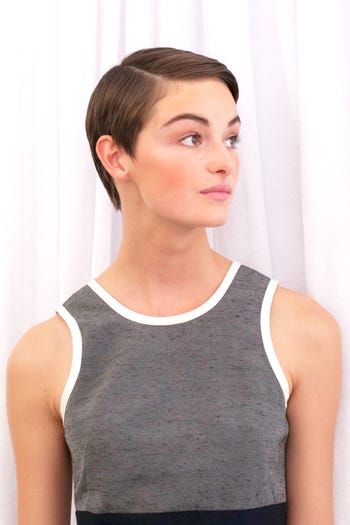
Higher Learning
Once you've got a name, it's time to find out if that person has the chops to do your, er, chop. Reyman says to call the salon where this person is employed and ask them if that stylist receives further education. "Hair is a craft that you master," he says. "Continuing education is something all the best stylists do. You want to know how often they go to hair-education seminars to learn how to do better work and improve themselves, as well as the newest techniques."

Go On A "First Date"
A consultation, says Reyman, is like a first date — it's a low-commitment way for you to figure out if you like this person enough to continue seeing them. Sitting down for a consultation will help you discern if the stylist understands length, density, and texture, and it will give you a chance to ask questions without the looming fear of shiny scissors coming at your mane.
But, notes Reyman, don't go in for a blowout with someone and expect that to be an indication of how that person will cut your hair. "I know plenty of hairdressers who can style really well but can't cut their way out of a paper bag," he says. "A lot of hairdressers actually hide behind a bad haircut with a good blowout, so that's not a good indicator." Focus your consultation on asking questions about your stylist and their experience rather than how they style your hair.

Understand All Aspects Of Hair
According to Reyman, cutting hair is not as simple as just, well, cutting hair. A good stylist, he says, needs to understand the three main aspects of hair: length, density, texture. "A lot of hairstylists don't know how to deal with density or even texture," he explains. "Most hairdressers learn how to deal with length — the surface of the hair, the layers, and the perimeter — but they don't know how to soften up the interior. That's a very specific skill. Knowing how to thin dense hair out is a skill set that’s more worthwhile than anything else because if I know how to thin out density, I can soften it up."
So, how can you determine if your hairstylist knows those three key points? Reyman says a good stylist will be able to diagnose the hair and talk you through each aspect and what they plan to do about it. "Think of it like GPS — I need to know where I want to go and then figure out the route to get there," he explains. "I need to know if your hair is fine or coarse; wavy, straight, or curly; dry or oily. Then, I need to know what's going on with your current situation and speak to you about where you need to go: bigger, smaller, curlier, straighter, flatter, fuller, etc. Once we decide what your style is and where you are going, we need to decide that route, which in hair means technique and then the styling and products." Which leads us to…
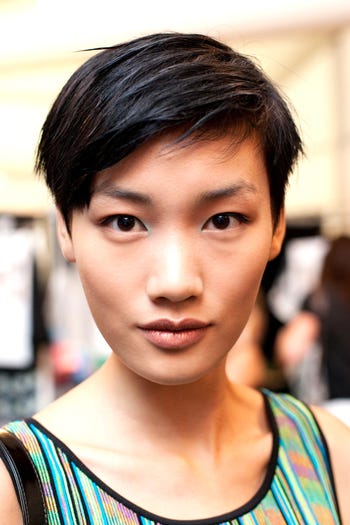
It's Not About The Money
Think a cha-ching price tag on a stylist automatically makes them good? Think again. "Price doesn't always equal excellence," says Reyman. "Just because you are paying more does not mean you are getting the best service. There are some really famous [and expensive] hairdressers out there that can't cut hair."
Conversely, Reyman says that while a high price doesn't always denote excellence, a very low price almost universally means a bad haircut. "Part of becoming an excellent hairdresser is education and exposure, and if you are charging very little money for your services, that means you have not devoted yourself to the craft and spent the time and money to learn." So, look for someone within your budget, but don't go running toward a Groupon deal.
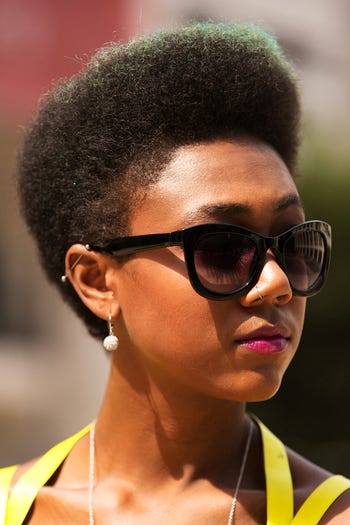
Getting To Know You
Once you've zeroed in on someone you like, it's time to get to the business of your cut. This is where it's important for the stylist to be asking questions about you and your hair, says Reyman. These include what you like and what you don't like, how you style your hair every day, and, most importantly, why you stopped going to your previous stylist.
"A good stylist will always ask what happened with their last stylist," says Reyman. "If they are sitting in my chair that means someone else failed them; otherwise, they would still be going to that person. If you were happily married you wouldn't be on a date with me — it means whoever saw you before didn't do their job, and I want to know what went wrong so I never do that."
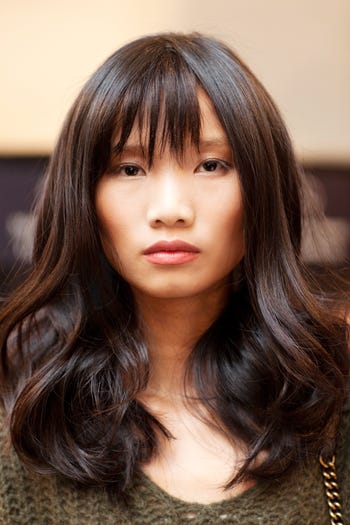
Picture Perfect
Some of the responsibility for getting a great cut also falls on your shoulders. In particular, Reyman says you should always (as in all the time, no exceptions) bring in a picture to your hairstylist. "My goal is to help you get a great cut, but you need to help me get there," he says. "Bring in a picture and say, ‘I like this part of the haircut or this length.’" Showing your stylist a visual is the best way to make sure you are both on the same page.
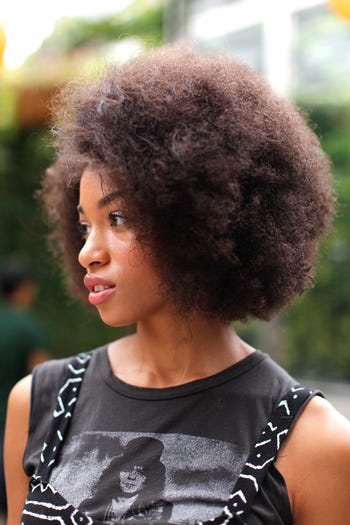
Lost In Translation
The reason Reyman prefers photos to words is that many clients use technical terms they don't necessarily understand. Or, the terms they use are interpreted differently by the stylist. "Soft to me might not be soft to you," says Reyman. So, remove the prospect of misinterpretation by showing rather than just telling.

Let Them Do Their Job
A lot of clients, says Reyman, go into a haircut with bad past experiences, so they end up thinking certain techniques don't work for them. The truth of the matter, he says, is that perhaps it wasn't the method that didn't work but rather the person who was trying to do it. "A client might say, 'Don't use a razor; that's not good for my hair.' Instead of just agreeing with them, a good hairstylist will ask what happened to them to make them think that's not good. Then I can deduce if it was the technique or if that razor really didn't work on their hair type."
Reyman says your stylist should not only be asking you questions about those methods but also doing the job of educating you about them. "My therapy for those clients is to help them heal from bad haircuts," he says. "I educate them on all the things I am using and doing so they understand it."

Talk It Out
Reyman says to be wary of those stylists who take the "they know best" approach. While you are going to someone for their expertise, you also need to remember that no one knows your hair better than you, he notes. So, you need to do everything you can to educate that person on your hair, and they need to be open to learning about your hair and constantly asking questions. "You don't want someone who is rigid about what to do," he says. The stylist is there to guide you and work with you, not dictate your hair or bully you into something you may not actually want.
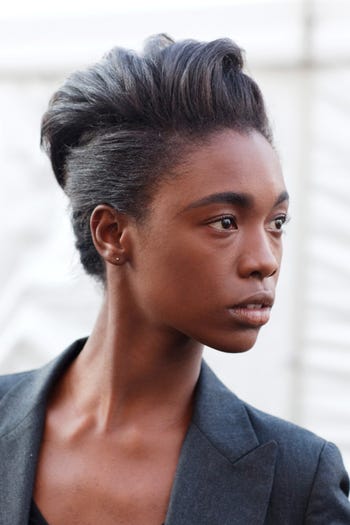
Don't Trust Anyone
"I get clients who sit in my chair and say, 'I trust you. Do what you want.' Trust me? You don't even know me," says Reyman. "You have to earn trust; it comes with time and experience." Reyman says it's important to have an opinion about your hair. You may not know exactly what you want, but you know what you don't want, and it's okay to tell your stylist that. "Go in with an opinion, but just make sure it's not a rigid opinion — there needs to be a conversation happening between you and your stylist," he says.

The Doctor Is Out
There's a common group-think out there right now that a hairstylist is like a therapist — you bond with your stylist at a vulnerable time, so you wind up talking to them about your life, your problems, and everything in between. Problem is, says Reyman, if your stylist is being your therapist, they aren't being a very good stylist. "If I am trying to connect with you based on your life, I'm not doing my job," he says. "My job is to give you the best possible haircut you've ever had and teach you how to maintain it, style it, work with it, and control it."
"When you sit in your stylist's chair, they need to be connecting with you to make sure they understand your hair, your texture, your maintenance, and what you like — not [hearing] about your dog or your kids. I'm not trying to be your best friend or your therapist or to fix your emotional or financial problems," says Reyman.
Of course, hairstylists are taught to connect with clients on a personal level, and some friendly chitchat is always welcome, but that bonding should not get in the way of them doing their job. That's why it's in your best interest not to distract them too much while they are working. "I control the one thing I am an expert at, and that's your hair," he says. "When I do that well, then you leave with the service you paid for — not a new friend."

Check In, Check Up
While you definitely want a stylist to be in the zone when they are cutting your hair, they shouldn't be totally tuned out, says Reyman. As they cut and shape, they should be checking in with you constantly to see if you are comfortable with the direction the cut is going. "I bombard my clients with questions," he says. This is especially important if it's a drastic cut or change, but it can also be beneficial for regular trims to make sure you get exactly what you wanted and that you and your stylist are on the same page throughout the process of the cut.

Teacher's Pet
Reyman also says it's important for you to tune in while your hairdresser is styling your locks so you can learn the technique and how to get the same look at home. "If I have done my job properly," he says, "then my client knows how to style their hair."
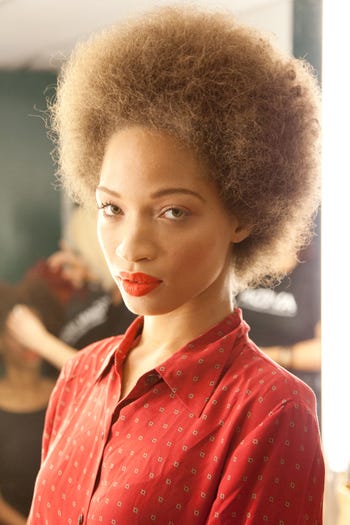
Product Know-How
In addition to being great at cutting, a really stellar hairstylist should also be able to educate you on the right products for your hair and how to use them. The problem, says Reyman, is that a lot of salons pressure their stylists to just sell product. While that's not always a bad thing if the products they are steering you toward are actually beneficial to your hair, "When we sell product for the sake of it, it's a disservice to everyone," he says.
Ask your stylist questions about the products they use to see if they really have been educated on them or if they are just selling for the sake of selling. If they can show you different ways to use them and are recommending them based on how you told them you like to style your hair, then odds are good this isn't just a sales pitch but beneficial intel on how to make styling your hair easier.

Tailor Made
What's the biggest difference between a good cut and a bad one? According to Reyman, what makes a good haircut is that it's personalized. "Every head of hair is different. A hairdresser who is good knows how to manage every head of hair and can customize the cut to you rather than cutting one type of cut. A lot of clients just get haircuts put on top of their heads. That, to me, is a bad haircut. A modern cut is customized — if a hairstylist can't do that, they are no good. For me, I'm a tailor and I am customizing the cut for every client in my chair."

Treat Every Time Like The First Time
So, you've got a cut you love and a stylist you trust — okay for both of you to just get comfy and low-key on your next appointment, right? Nope, says Reyman. "Every time I see my clients, I treat them like a fresh, new person I am working with. I talk about their hair and their last cut, what they liked about it, what's changed since then, and what they weren't crazy about." Even if you aren't looking to change your cut, Reyman still says your stylist and you should be treating this as a fresh experience. "Everything changes: your diet, your age, your desires, the trends. So, it's always a new haircut."
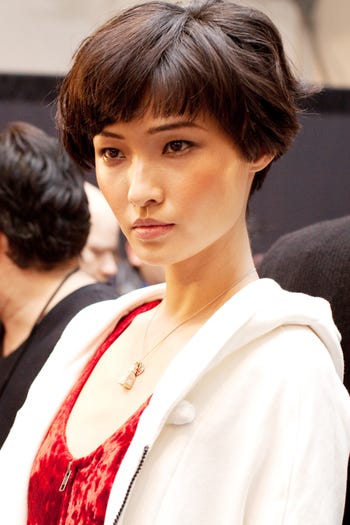
Be Forgiving...
As Reyman said earlier, trust is something you need to build, and that goes both ways. "A lot of people will come in and they don't like what they got, so they just go somewhere else," he says. "But, everything is fixable, so you should give that stylist a second chance. Tell them exactly what happened and why you didn't like it, and give them the opportunity to fix it."
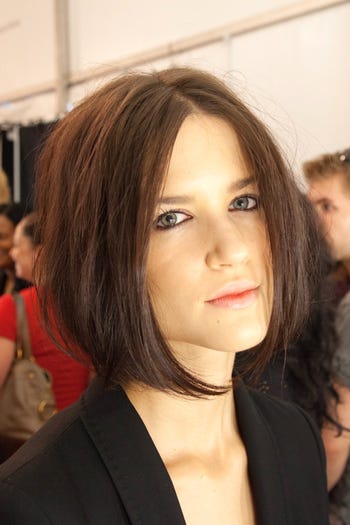
But Not Too Forgiving
However, there should be a limit to your good graces, he notes. "If your hair sucks after the second or third time, then there's that line where the hairstylist doesn't know what the fuck they are doing. Just because you went to hair school and work at a nice salon doesn't mean you know what you are doing. You need to be able to customize the length, density, and texture of a client's hair, and if you don't know how to do that, then you really shouldn't be cutting hair." Preach.
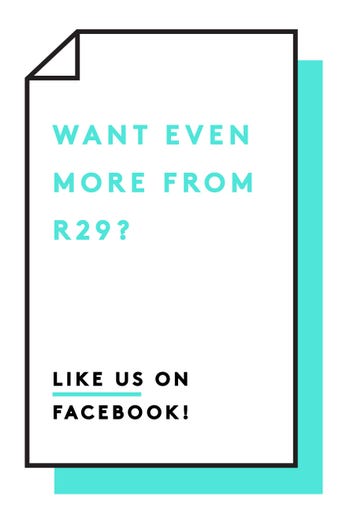
Like this post? There's more. Get tons of beauty tips, tutorials, and news on the Refinery29 Beauty Facebook page. Like us on Facebook — we'll see you there!
Like what you see?How about some more R29 goodness, right here?
Turns Out Rosewater Is Also Pretty Boss For Your Hair
The Great Big Guide To Highlights
5 Braids You HAVEN'T Seen Yet
No comments:
Post a Comment